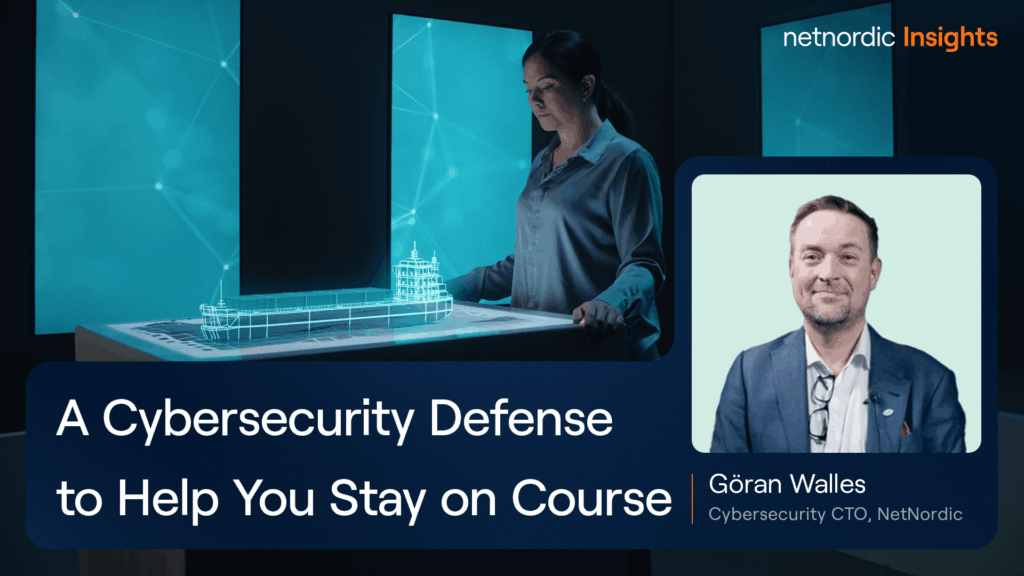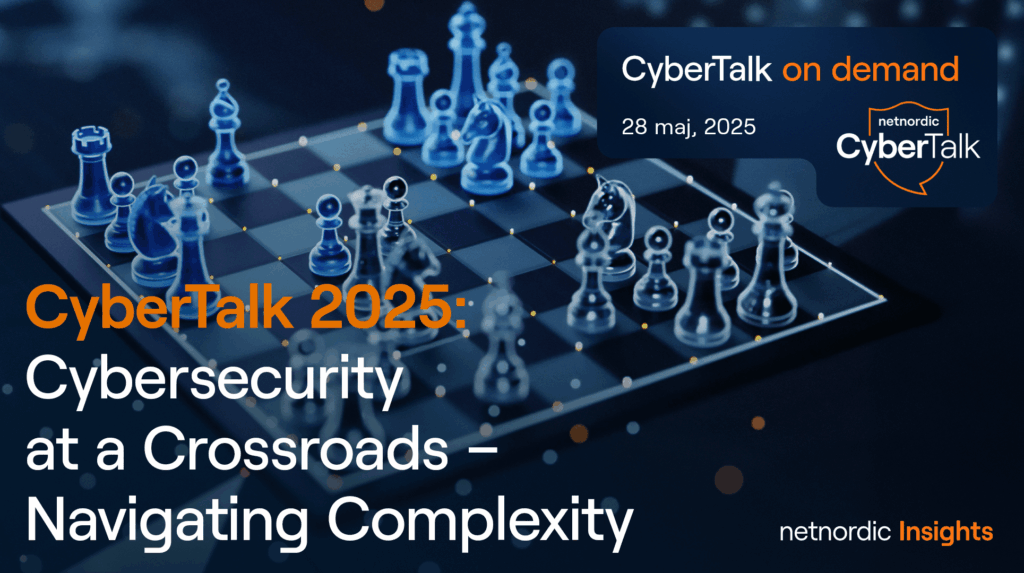Cyber Security Leadership: Cyber Resilience Starts with You

In today’s digital age, cybersecurity
is of utmost importance
Managers often delegate responsibility and risk ownership when they shouldn’t. It’s not uncommon for an employee to identify a risk, report it to management, and have it ignored. However, management should be the ones making decisions on how to respond to these risks.
In today’s digital age, cybersecurity is of utmost importance. It is about identifying anomalies that have the potential to compromise the entire business or cause significant financial problems. It’s no longer just the responsibility of the Chief Information Security Officer to worry about million-euro ransoms. Every company leader needs to understand the gravity of the situation and take an active role in addressing these risks.
At NetNordic, we have witnessed these issues in our customers’ way of working. A prevalent misstep is placing the entire burden of cybersecurity on the shoulders of the IT staff. This approach is flawed; cybersecurity is not solely an IT issue. Instead, leaders should foster an environment where every member of the organization feels accountable and empowered to contribute to cybersecurity efforts.
Consider this scenario: if a risk materializes once every five years, and the compromised assets are valued at a million euros, the cost of the risk spread over five years would be 200 000 euros annually. It is essential for company leaders to assess how much money should be invested in reducing the risk annually, and in this exact scenario, the allocated budget should be that of 200 000 euros. More so, it is crucial to prioritize and allocate resources effectively.
Key points for company leaders
To effectively address cyber security, here are six key points for company leaders:
- Leadership Commitment:
Top executives, it’s time to show unwavering commitment to cybersecurity. Allocating resources, setting clear expectations, and leading by example are not just actions; they send a resounding message throughout the organization. Genuinely prioritizing and actively demonstrating dedication to cybersecurity sets the tone, fostering a culture of heightened awareness. - Clear Policies and Processes:
Enhancing cybersecurity practices mandates the formulation and communication of clear, comprehensive policies, and procedures. It’s not about crafting cryptic manuals but rather delineating expected behaviors, data handling practices, and incident reporting protocols. When every member of the organization comprehends the roadmap, the result is a secure cyber environment that withstands potential threats. - Own Regular Risk Assessments:
Leadership isn’t just about making decisions; it’s about taking charge. Regular risk assessments fall within this realm. Leaders must seize the wheel, identifying vulnerabilities and potential threats within the organizational systems. This knowledge is pivotal for informed decision-making on risk mitigation strategies that align seamlessly with the organization’s overarching objectives. - Employee Engagement:
Beyond mere reporting of incidents, there lies a broader scope for employee involvement in cybersecurity efforts. It’s a team effort. Actively encourage your team to contribute to improvement initiatives. By engaging employees, they seamlessly become an indispensable part of the first line of defense against the ever-looming cyber threats. - Continuous Monitoring and Incident Response:
The organization needs to establish a robust and dynamic system for the continuous monitoring of its IT infrastructure. This system should be able to accurately track, record and report all activities, making sure that all elements of the infrastructure are functioning as expected and that no unauthorized actions are taking place. In addition to this monitoring system, the organization should also develop a well-defined and comprehensive incident response plan. This plan should include clear procedures on how to respond to different types of security incidents or breaches, who is responsible for each action, and what tools and resources are available for use. This plan should be easily understandable and accessible to all relevant staff, so that everyone knows exactly what to do in case of an incident. Moreover, these measures will also serve as a deterrent for potential attackers, as they will know that the organization is actively monitoring its systems and is ready to respond to any threats. This can help to further enhance the organization’s overall IT security, making it a harder target for potential attacks. - Promote Accountability:
The weight of cybersecurity responsibility should be felt by every individual and team within the organization. Leaders, in their role as custodians, must hold everyone accountable. Recognize and reward commendable cybersecurity practices, but equally vital is the prompt addressal of lapses or non-compliance. By emphasizing responsibility, leaders sculpt a culture where cybersecurity is not a mere formality but a deeply ingrained commitment.
Sculpt a robust cybersecurity posture
Implementing these strategies empowers C-suite leaders to sculpt a robust cybersecurity posture and cultivate a culture of security awareness. Cybersecurity is not just a technical matter; it demands leadership, commitment, and active participation from every echelon of the organization.
At NetNordic, we’ve observed the significance of these principles in shaping our customers’ cybersecurity resilience. The storyline unfurls, with responsibility and vigilance at its core, where each C-suite leader plays a pivotal role in fortifying the organization against the relentless tide of cyber threats.

Joonathan Kuva
Chief Information Security Officer NetNordic Finland OyTable of Contents
Content subjects category
Content type
Related content
Contact Us
Feel free to call us directly on our telephone number +47 67 247 365, send us an email salg@netnordic.no, or fill in the form and we will get back to you as soon as possible! Thanks!
Latest content

A Cybersecurity Defense to Help You Stay on Course
Read more
CyberTalk 2025: Cybersecurity at a Crossroads
Read more


